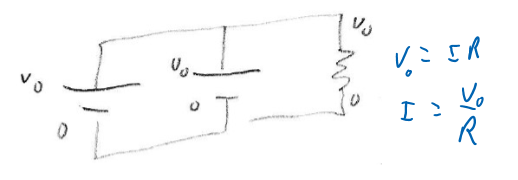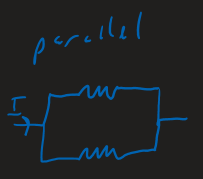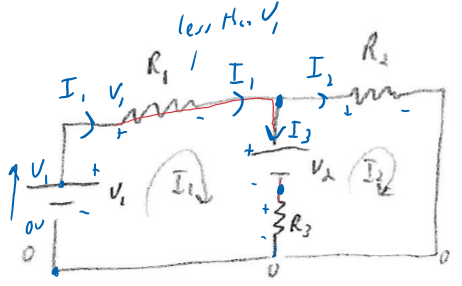Lecture 20
Readings
http://umdberg.pbworks.com/w/page/105379521/Example%3A%20Batteries%20in%20series%20and%20parallel
http://umdberg.pbworks.com/w/page/106206591/Example%3A%20A%20complex%20network
Batteries in Series
Batteries in Parallel
- If the external resistence is higher than batteries in parallel will live long and if the internal resistence is higher then the batteries in series will be live long.
- Usually, the internal resistence of batteries are very low so connecting in parallel will make the batteries live long.
- But if the external resistance is high in this case the batteries will live long but you will not get much power from it.
- As the length increases, conductance decreases
- As the diameter decreases, conductance decreases
- Each conductance is associated with its own "battery"
- Each conductance has a current that flows through it
- The total current through the membrane is the sum of the three currents: Sodium , Potassium, Leak
Batteries in a Circuit
- Basic:

"Power":
= "brightness" of a light bulb
- use
- use
- use
- use
Use whichever of the three forms above is most convenient
If batteries are in series:

- So the low end of the top battery is at
- Choice of "zero" is arbitrary, but the zero can only be at 1 spot (1 wire)
If batteries are in parallel:


Doesn't really change the circuit.
Same current through resistor, because still
Any benefit at all?
- 1 battery only has so much "capacity" , in the sense of the number of charges it can put out.
- Batteries "run down"
- Two batteries in parallel can keep light on longer
Complex Circuit - Kirchhoff's Rules
https://opentextbc.ca/universityphysicsv2openstax/chapter/kirchhoffs-rules/
https://cnx.org/contents/[email protected]:[email protected]/Problems

Loop 1:
Loop 2:
Unknowns =
So 2 equations and 2 unknowns
Solve 2nd equation for
- Plug into 1st equation:
- Solve for
Algebra can be intense:
Point is, set up loops where net change in voltage for entire loop is zero
Then use guassian elimination to solve system